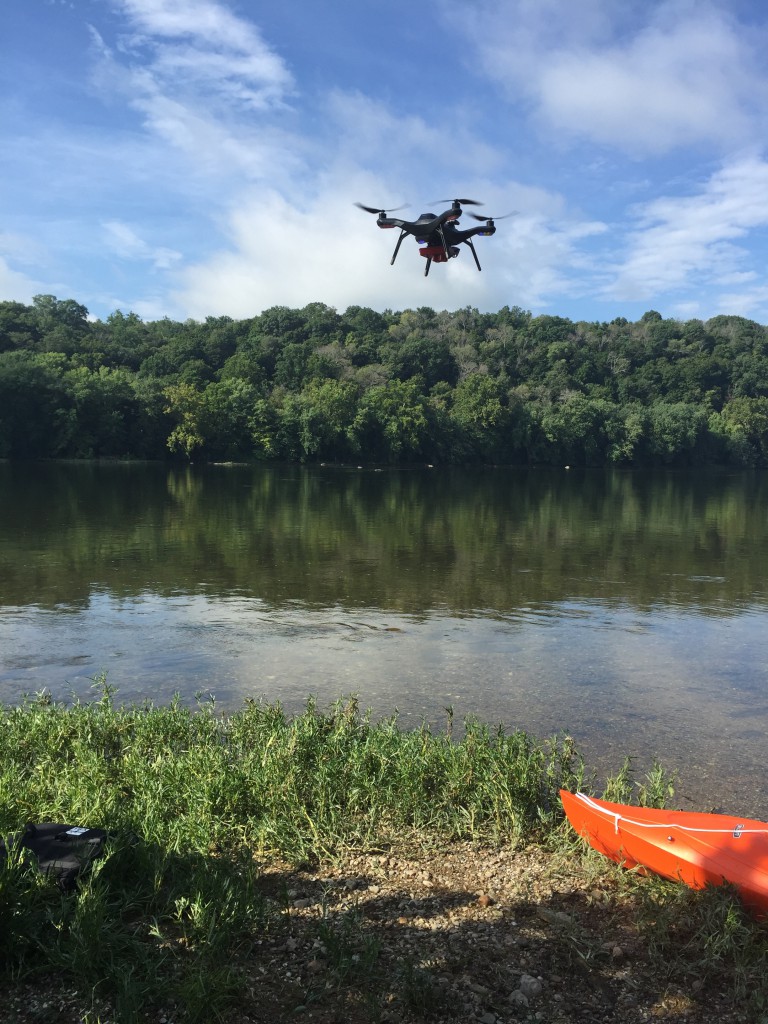Kevin Stanfield – The new age of environmental research and drones

Aug. 22, 2018 - Kevin Stanfield just graduated from Hood, with a master of science in Environmental Biology, and a certificate in Global Information Systems, and his thesis related to environmental science and the use of drones and computational/remote sensing techniques.
Kevin Stanfield
Graduation Year
2018
Program
- Environmental Biology (M.S.)
- Computer Science (M.S.)
- Geographic Information Systems (Certificate)
Department
- Biology
- Computer Science & Information Technology
The thesis, “Developing Methods to Differentiate Species and Estimate Coverage of Benthic Autotrophs in the Potomac Using Digital Imaging,” involved finding a way to use drone imagery to quantify coverage of benthic vegetation in the Potomac River. “When I started my thesis track, I went to each of the professors in the Environmental Biology Department and explained my interest in GIS and riparian ecosystems before asking whether they had any ongoing research in this area.” Dr. Drew Ferrier, Kevin’s advisor, had been looking into quantifying benthic cyanobacteria coverage in the Potomac with digital photography. Dr. George Dimitoglou, Associate Professor in Hood’s Computer Science Department, had been working with Dr. Ferrier on this and other projects and had used drones to look at benthic features in the Potomac the year before. Dr. Dimitoglou was willing to join Kevin’s committee and provide his drones for the project. The committee was rounded out by Dr. Kevin Sellner, a senior scholar at Hood, and a cyanobacteria expert. All three provided an immense amount of feedback and advice for the project. They also brought in many of their friends and professional contacts who provided data, equipment, and input on the research design.
The Maryland Department of Natural Resources (MD DNR), National Oceanographic and Atmospheric Association (NOAA), and the United States Department of Agriculture (USDA) all lent aid in the form of equipment or data. Kevin presented his research at the Western Maryland GIS Users Conference, hosted by Hood on May 18th, 2018. He presented to the National Park Service in late June. “My thesis took almost two years to complete, from my first meeting to my final revisions. It was a difficult process, but I am very happy to have gone through it,” concludes Kevin.
Before starting his Hood journey, Kevin could not decide between Environmental Biology and Geographic Information Systems. Hood College happened to have a program that combined the two, and was also local and competitively priced. “In the end, the decision was easy”, says Kevin. He believes the Environmental Biology program has prepared him well for this field. The incorporation of GIS into ENV shows that the department has current knowledge of what employers and researchers are looking for in program graduates. Kevin will soon be starting a GIS internship with the National Park Service through the American Conservation Experience. During this 34-week internship, he will be mapping the easements and rights of way which cross the C&O Canal National Park and attaching any legal documentation or relevant information to the spatial data.
What advice does Kevin have for both incoming and current students in the Environmental Biology Program? “I would encourage incoming graduate students to make friends with everyone in their program, both students and professors. Not only do you have similar interests, but these people will soon be your professional peers. This will give you a pool of professionals to reach out to if you are in need of work or workers. I would also encourage students who are pursuing the thesis track to choose research that they will enjoy doing, because it will consume your life for a year or two, and it is a lot easier to make yourself work if you are also having fun.”
Are you ready to say Hello?
Choose a Pathway
Information will vary based on program level. Select a path to find the information you're looking for!
